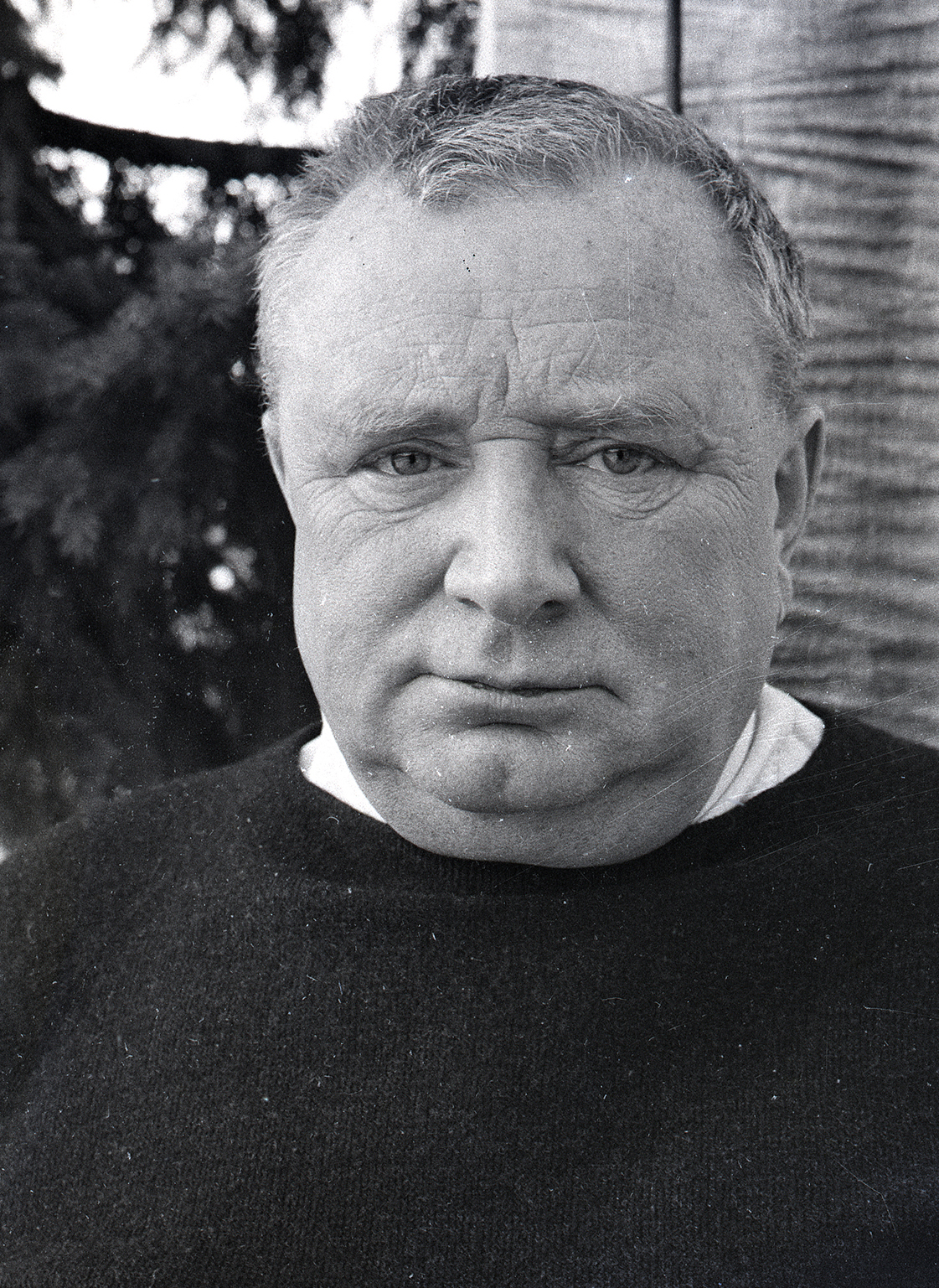Dierkes, Paul (1907-1968) Archaic Head, 1952
Paul Dierkes(1907 Cloppenburg - 1968 Berlin), Archaic Head . Limestone, 1952. 15 x 9 x 12 cm (without plinth), 19 x 10 x 11 cm (with plinth), monogrammed "PD" on the reverse.
- Shaped Originality -
At first glance, the limestone sculpture is recognizable as a human head, although it does not have a fully formed face. The nose, eyes, and ears are only hinted at, and yet they are so present that we immediately recognize them as features of a head, and we identify the bulge above the nose as the forehead, and the area below as the chin and neck, and we think we see the mouth and eyebrows, although they are not even hinted at.
We are looking at a kind of prototype of the head, although the head itself does not have the shape of a human head as it exists in nature. Nor is it the geometric shape of a circle or an oval, which would have an original and at the same time timeless character. Rather, we see a form shaped by a creator that cannot be resolved geometrically, although - especially when viewed from the side - it has a geometric rigor similar to that of Oskar Schlemmer's heads. Unlike Schlemmer's figures, however, Dierke's work reveals itself as something created: Traces of the shaving iron and the blows of the chisel are visible everywhere. The head is a handcrafted work of art that looks like an archaic artifact. The impression of originality therefore applies to both the representation and the production: the face only indicated goes beyond any concretely formulated physiognomy, so that a "primal individuality" reminiscent of the figures on Easter Island can be seen here, which appears to have been created with primitive tools by an original creative will.
The impression of originality is reinforced by the ancient material of the stone, on which the traces of carving are also perceived as traces of weathering, making the head appear like a mysterious archaeological artifact that reveals ever new aspects depending on how it is turned and how the light falls. The wooden base, which also presents its own material and on which the head rests freely, fits in with this.
About the artist

Paul Dierkes by Gert Chesi, around 1964 /
CC BY-SA 4.0
As the son of a stonemason, Paul Dierkes was familiar with stone from an early age. After an apprenticeship as a stonemason, he decided to explore this material artistically and become a sculptor. He first studied at the Königsberg Art Academy under Stanislaus Cauer. In 1931 he transferred to the Munich Academy and received a scholarship to Rome. He then settled in Berlin. His first solo exhibitions followed, including at the Ferdinand Möller Gallery in Berlin and the Augusteum in Oldenburg. Dierkes undertook study trips to Amsterdam, Prague, and Paris.
To avoid being drafted by the Nazis, he left Berlin and settled in Groß-Glienicke after the war, but moved back to West Berlin after the division of Germany.
In 1947, he was appointed to the Berlin Academy of Fine Arts and became a professor in 1948. For 20 years, until his death, he headed the Department of Stone and Wood. One of his students was Heinz Spilker.
Paul Dierkes is one of the protagonists who established modern sculpture in post-war Germany. He created archaic-looking forms that exude an aura of originality and, with their figurative allusions, also have a high symbolic value. The original effect gives his art a kinship with architecture, which led Dierkes to collaborate with Egon Eiermann, Peter Poelzig, and Sep Ruf. Many of his works characterize public spaces and demonstrate that Dierkes also understands sculpture as a monumental art that auratizes the respective location through a formed originality and thus develops a social relevance.
The aesthetic effect of sculptural originality often goes hand in hand with an emphasis on "being made," which underlines the craft aspect of the act of creation. For this reason, Paul Dierkes was also fond of woodcuts, which are related to the art of carving.
In 1954 Paul Dierkes was awarded the Art Prize of the City of Berlin.
Every idea creates something we suspected but did not know.
Paul Dierkes
The young Paul Dierkes already had the ability after his four-year apprenticeship as a stonemason to fathom the properties of each selected piece of wood and each stone and to figuratively transform individual natural processes of the grown organisms by means of his own working process.
Herbert Wolfgang Keiser
Bibliography
Herbert Wolfgang Keiser: Der Bildhauer Paul Dierkes, München, 1977.

